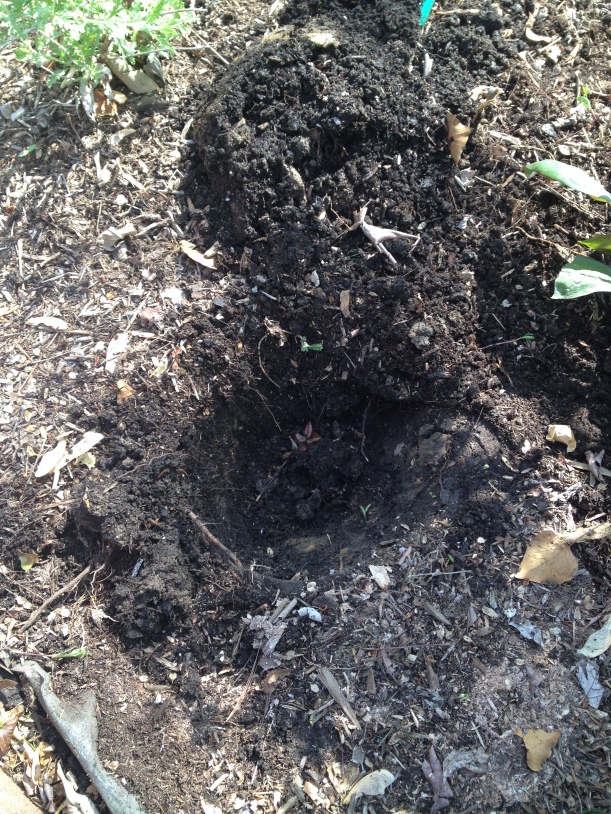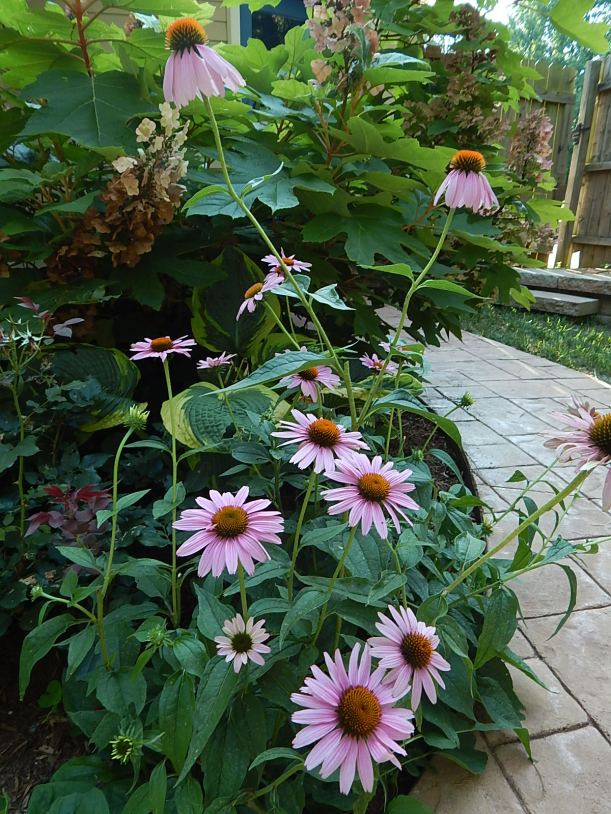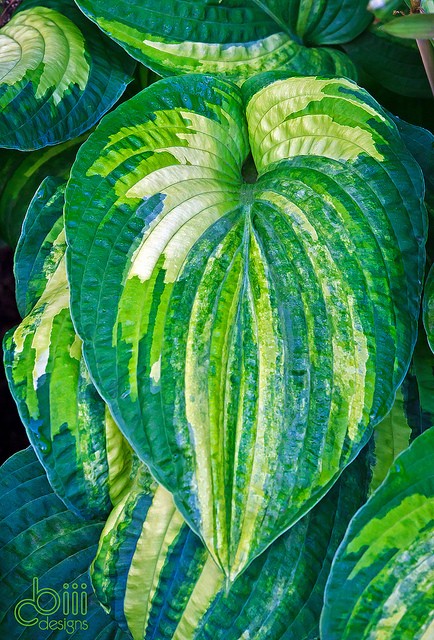Tag Archives: canna
Gardening: It’s a Dirt(y) Business
I have written a little about the clay soil that is prevalent here in Arch City. If you are going to garden, you are going to encounter this very dense, hard to break-through soil that seems as hard as concrete during a hot, dry spell (translation: summer in St. Louis). How do you identify clay soil? Easy. If it sticks to your shoes, attaches itself in clods to your shovel and you have to throw a clump of it across the yard to break it up, you’ve got clay. Clearly, this has not deterred the hardy souls in the area who have the vision and fortitude to overcome this stuff. My strolls in my neighborhood and beyond are testimony to that.
And so is my soil. In my fourth year of amending, amending, amending, I am starting to see the difference. More accurately put, I am starting to feel the difference. Arch City-ites know what I am talking about. When I place the shovel or spade into the ground, the resistance isn’t quite as fierce. In fact, when I was digging into the patio bed to put in “Crazy Blue,” a new, compact Russian sage (perovskia atriplicifolia) my favorite nursery is featuring, the soil actually gave way with minimal effort. I consider this a major break-through.

After three years of adding lots of compost to my clay soil, the structure is finally improving. Digging into the soil is no longer at backbreaking, shovel bending experience–at least in this part of the garden.
There are several shrubs and perennials that will bust through this tough, mineral dense soil and there are things clay habitues need to know, such as:
1. This soil is dense, and the roots of many annuals, perennials, and vegetables struggle to make their way through. Many spring bulbs tend to rot over the winter in clay soils discouraging gardeners who must deal with this soil type. However, all is not lost–as long as you improve the soil structure. By that the experts will tell you to add 6-8 inches of organic matter throughout the bed, not just where you are placing your new specimen (yes, I have taken that short cut).
Of course, I continue to add the good stuff to the soil when I layer on mulch on top of all this. And my plants have thanked me for it. I’ve been pleased with the new emergence each spring and have become committed to amending my soil EVERY year.
2. Clay soil is slow draining. In addition to improving the soil structure of the garden beds, I want to improve the lawn where after a heavy rain the water has a tendency to sort of just sit there. I’m not talking about the low areas of the lawn, I’m talking about the slope areas where you’d think the water would be flowing down. Not so much. I do have areas where the water ponds. Those spots will get shrubs that tolerate ponding such as winterberry (ilex verticilatta), ligularia or river birch.
3. It can heave in the winter. Thankfully I have not experienced this with my plants, but I do have a gate that won’t open when the temperatures drop. In fact, I had to move my trash and recycle bins this winter because I could not get them through the gate.
4. There are lots of perennial “clay buster” choices available that thrive in this soil type. Black-eyes Susans, goldenrod, Russian sage, daylily (hemerocallis), purple coneflower, yarrow and canna are among the hardy perennials that can thrive in clay soil.
As I stated more than once, I am about the sizzle. I wasn’t really excited about concepts such as soil structure and amendments. My goal was to plant beautiful flowering annual, perennials and shrubs. I am glad I slowed down and have taken the time to prepare the soil. This annual chore has become a right of passage into spring and it’s paying off.
4 Annuals I am Obsessed With
A benefit of surviving a hot, humid St. Louis summer is that sub-tropicals perform well here as annuals. My list below includes annuals I’m obsessed with that are common in the south, but also pack a punch here in the Midwest. Or maybe I’m obsessed with these selections because they are a throw-back to my early 20s, when I lived in Houston, TX, where I was able to admire these plants day in and day out. Either way, these plants bring up the garden energy a notch and provide a leave me with sense of joy long after their beauty has faded. Most on the list I plant each and every year; while Canna has yet to join the backyard annuals.
What annuals accent your garden?
Embed from Getty Images
Canna. No, St. Louis is not the tropics, although a sweltering July or August day will give zones 8-10 a good run for their money. I do not live in the right zone for this plant, so it is classified as an annual here, but, yes, I’ve got to have this plant. I promise to shelter it from harsh winds and give it the full sun it requires and I am confident this tall, handsome plant will return the favor with gorgeous foliage that climbs the length of its 8-ft height and an unfurling of vibrant, ruffled flowers.
Embed from Getty Images
Caladium. Arching gracefully above the other mix of annuals in my window boxes on the front of my house, caladiums provide a little bit of that extra curb appeal I’m looking for every summer. And they give me the height I am looking for…not too tall, but just enough to draw attention. Their variegated white/green/pink foliage provide a nice pop of color in the shade, and I adore their arrowhead shape. So pretty, you might forget they’re not a flower.
Mexican heather (cuphea hissopifolia). Some like it hot and this baby really performs when the sun beats down…as long as it receives a restorative drink of water each day. Looking for a plant that seems to be in constant bloom? Mexican heather is the perfect choice, as it always has small purple blooms among its glossy green leaves. I have incorporated this annual into my potting scheme for several years now and have never looked back. Typically I fill a pot with a variety of annuals for visual interest, but not with this one. She gets a pot all to herself.
Embed from Getty Images
Nicotiana (nicotiana sylvestris). Known as flowering tobacco (for the shape of its leaves, I suspect), I am a big fan of this guy. The bright, star-shaped blooms on this annual really know how to show off. And when daylight gives way to evening, nicotiana lets of a fragrant scent that’s sure to make you slow down and take notice. I have typically planted this in pots but this year I intend to give it a go in the garden bed to accent “Spruce Springsteen,” the name we have affectionately given the dwarf Colorado blue spruce that I planted a year ago. I gave Spruce lots of space to accommodate its girth, which won’t happen for a few more years. Nicotiana will be a nice way to fill up the mulch bed.
5 Plants I’m Obsessed With
Stealing a line from Bravo TV host and hometown son Andy Cohen, I am obsessed with these five plants for the garden:
Embed from Getty Images1. Tall garden phlox. The color range available and the lovely “eyes” of tall garden phlox make my heart skip a beat. These tall wonders are first on my list for an after-work garden stroll. They are fragrant and mingle delightfully among the Russian sage, bee balm and Stella de Oro daylily. While I enjoy them most in the garden, they hold up well in a cut arrangement gracing the dining table.
2. Hosta, “Dorothy Benedict”. This beauty seems to have it all. It looks like a painting with streaks of bright green-yellow, blue-green and green-green interspersed with white. Leaves are textured, edges are smooth. Pop it into the shade garden and gaze away. What’s not to love? Oh yeah, the price (I’ve seen Dorothy Benedict quoted at $200-$500).
3. Lady’s Mantle (Alchemilla mollis). Chartreuse-hued plants work well in a wide range of applications in the garden. Contrast this plant with cool blue-tinged foliage or the deep purples of “Mainacht” salvia. Or complement lady’s mantle with bursting colors such as bright pink Knockout roses. The old-fashioned girl will make its way into the garden this year.
4. Kobold Gayfeather (Liatris spicata). I like spikes, and this plant delivers. Commonly known as blazing star, it pushes forth a stalk that really is a bunch of rounded flower heads that are fun to watch unfold from the top down. It attracts butterflies and works well in clay soil. Kobold is a compact version of liatris, and I am told this plant does not need staking, another bonus.
Embed from Getty Images5. Foxglove (Digitalis). The tubular bells on this biennual are nothing short of amazing. The freckles on the inside if the bloom spill forward on these charming flower spikes will be the perfect addition to my cottage garden. I grew them years ago in my backyard garden in Palatine, IL. Why I haven’t introduced them to my St. Louis landscapes escapes me. But that’s about to change.












